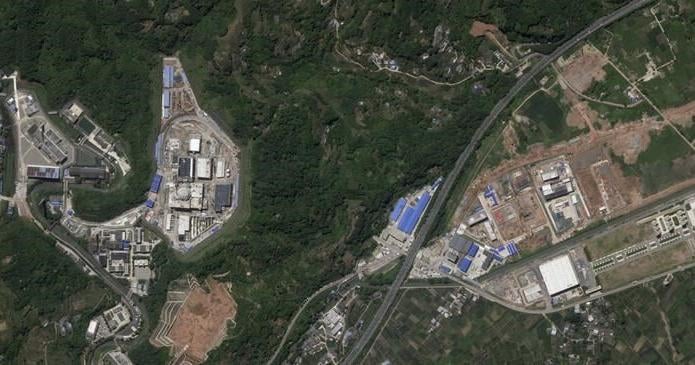Bangkok (AP) — China has built a land-based prototype nuclear reactor for a large surface warship, in the clearest sign yet Beijing is advancing toward producing the country’s first nuclear-powered aircraft carrier, according to a new analysis of satellite imagery and Chinese government documents provided to The Associated Press.
There have long been rumors that China is planning to build a nuclear-powered aircraft carrier, but the research by the Middlebury Institute of International Studies in California is the first to confirm it is working on a nuclear-powered propulsion system for a carrier-sized surface warship.
Why is China’s pursuit of nuclear-powered carriers significant?
China’s navy is already the world’s largest numerically, and it has been rapidly modernizing. Adding nuclear-powered carriers to its fleet would be a major step in realizing its ambitions for a true “blue-water” force capable of operating around the globe in a growing challenge to the United States.
Nuclear carriers take longer to build than conventional carriers, but once in operation they are able to stay at sea for much longer because they do not need to refuel, and there is more room on board for fuel and weapons for aircraft, thus extending their capabilities. They are also able to produce more power to run advanced systems.
Right now, only the United States and France have nuclear-powered carriers. The U.S. has 11 in total, which allows it to keep multiple strike groups deployed around the world at all times, including in the Indo-Pacific.
But the Pentagon is growingly increasingly concerned about China’s rapid modernization of its fleet, including the design and construction of new carriers.
China currently has three carriers, including the new Type 003 Fujian, which was the first both designed and built by China. It has said work is already underway on a fourth, but it has not announced whether that will be nuclear or conventionally powered.
The modernization aligns with China’s “growing emphasis on the maritime domain and increasing demands” for its navy “to operate at greater distances from mainland China,” the Defense Department said in its most recent report to Congress on China’s military.
How did researchers conclude China has built a prototype reactor for a carrier?
Middlebury researchers were initially investigating a mountain site outside the city of Leshan in the southwest Chinese province of Sichuan over suspicions that China was building a reactor to produce plutonium or tritium for weapons. Instead they said they determined that China was building a prototype reactor for a large warship.
The conclusion was based upon a wide variety of sources, including satellite images, project tenders, personnel files, and environmental impact studies.
The reactor is housed in a new facility built at the site known as Base 909, which is under the control of the Nuclear Power Institute of China.
Documents indicating that China’s 701 Institute, which is responsible for aircraft carrier development, procured reactor equipment “intended for installation on a large surface warship.” as well as the project’s “national defense designation” helped lead to the conclusion the sizeable reactor is a prototype for a next-generation aircraft carrier.
What does China say?
Chinese President Xi Jinping has tasked defense officials with building a “first-class” navy and becoming a maritime power as part of his blueprint for the country’s great rejuvenation.
The country’s most recent white paper on national defense, dated 2019, said the Chinese navy was adjusting to strategic requirements by “speeding up the transition of its tasks from defense on the near seas to protection missions on the far seas.”
Sea trials hadn’t even started for the new Fujian aircraft carrier in March when Yuan Huazhi, political commissar for China’s People’s Liberation Army Navy, confirmed the construction of a fourth carrier. Asked if it would be nuclear-powered, he said at the time that would “soon be announced,” but so far it has not been.
Neither China’s Defense Ministry nor Foreign Affairs Ministry responded to requests for comment.
Even if the carrier that has been started will likely be another conventionally-powered Type 003 ship, experts say Chinese shipyards have the capability to work on more than one carrier at a time, and that they could produce a new nuclear-powered vessel concurrently.
___
Tang reported from Washington D.C.
